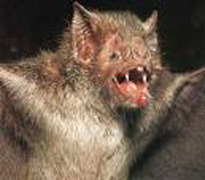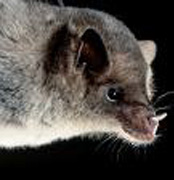Save The Bats
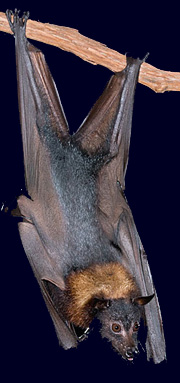 ; ;
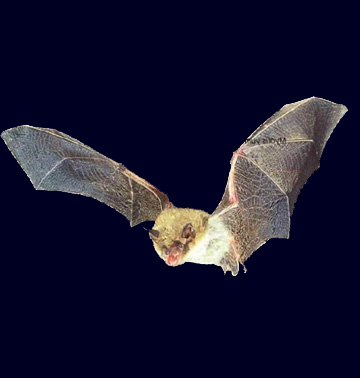
|
|
Vampire Bats Many questions received by the Museum concern the vampire bat. Because the true vampire bat of Central and South America feeds on blood, a popular misconception has been to link it to the human vampire legend. The Eastern European tale of a vampire, a corpse that came back to life and sucked blood from the neck of its human victim, dates back to the Middle Ages. In fact, there are no vampire bats native to Europe or Asia; they were not even known to exist before the 1500's when explorers visited the New World and observed their unusual eating habits. Indeed, the bat was named for the legend rather than the legend originating with the bat. |
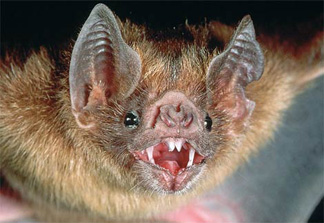 |
|
The vampire bat feeds mainly on the blood of cattle, horses, and wild mammals such as deer and peccaries. It seldom bites humans. When feeding it chooses to land near a hairless area of thin skin -- perhaps the hoof or shoulder of the animal -- hop or walk cautiously to a likely spot, lick it, then make a small incision and lap the animal's blood. The harm from such bites arises not from the amount of blood lost, which is relatively small, but rather from the exposure of the livestock to secondary infections, parasites, and the transmission of viral-borne diseases such as rabies. Rabies occurs naturally in many wild animals. Actually, a higher incidence of the disease is found in skunks and foxes than in bats. In the United States the rate of occurrence is so small, barely a fraction of a percent, that there is very little danger to humans. Though experiments have shown that theoretically rabies is a virus that can be air-borne or transmitted through contact with infected bat urine, there is not one documented case of a human contracting the disease this way. Bat bites of humans are uncommon and rabies in humans resulting from such bites is extremely rare. But, bats can harbor the rabies virus and, therefore, should be handled with caution. The greatest incidence of rabies occurs in the large vampire bat populations found in South America. Here the danger is not so much to the human population but rather to the livestock exposed to bat bites. In South America a major economic problem existed when large numbers of cattle were lost to rabies and infection. An effort to control and eradicate the vampire bat was initiated in 1968 by the Agency for International Development in cooperation with the Mexican government. The U.S. Fish and Wildlife Service was assigned the task of studying its habits to obtain some clues for its control. Using several different methods of nighttime surveillance, observation of the bat's grooming behavior provided the answer. Bats are extremely clean, sometimes grooming, licking, and scratching themselves for hours. The vampire bat, in particular, grooms both itself and its neighbors intensively. A paste-like anticoagulant poison that causes internal bleeding in the bat was smeared on likely areas, fetlocks or shoulders, of cattle that had been bitten. Vampire bats usually return to their victims for more food, so when they attack again, they come in contact with the poison. Back at the roost in the process of grooming, they ingest and spread the poison with the subsequent death of a large percentage of the colony. The treatment is specific for the vampire bat; no other species is affected, and the anticoagulant does not appear to hurt the livestock even when injected directly into the stomach. At the present time, the poison is being used successfully in Mexico, Central and South America. |
Visit SAVE THE BEES HERE

presented by:
Signature Studios
Mark D. Sabatke
 50 Summit Avenue, Room 409
50 Summit Avenue, Room 409
 Hagerstown,
Maryland 21740
Hagerstown,
Maryland 21740  (301) 733-4363
(301) 733-4363Mark@SignatureStudios.info

